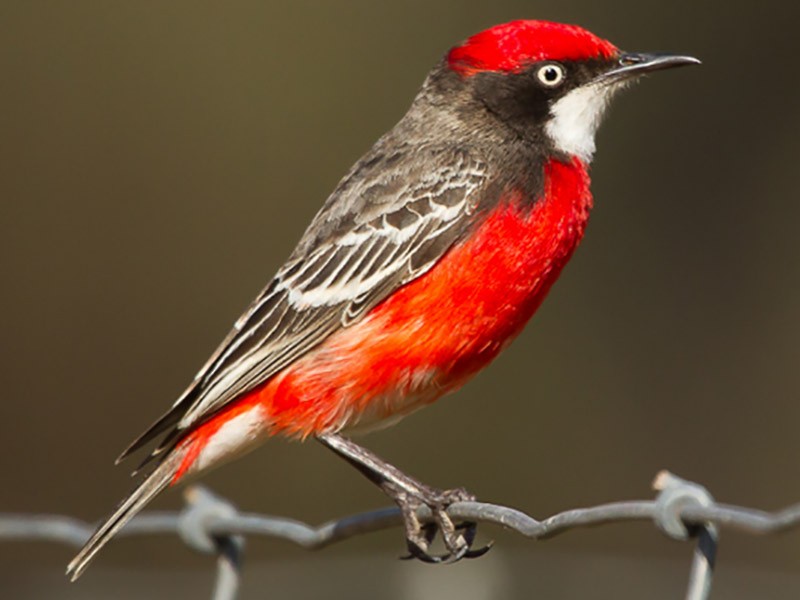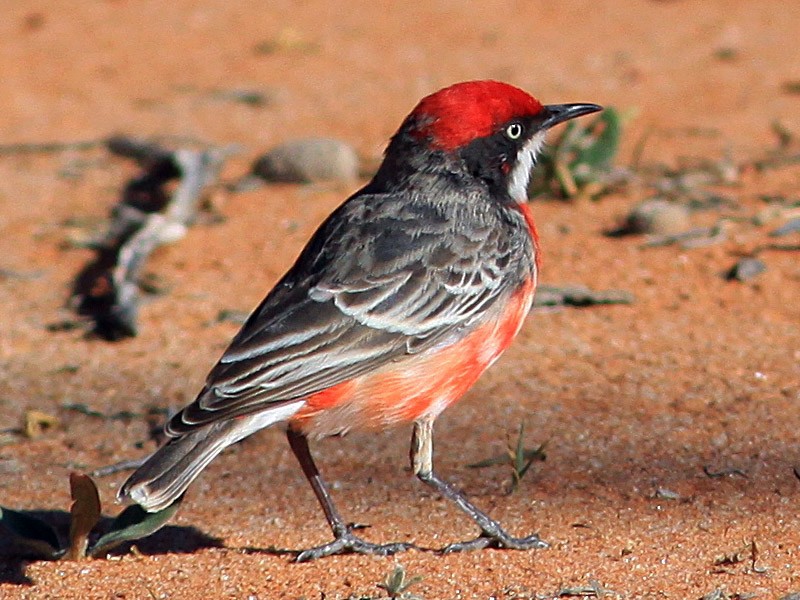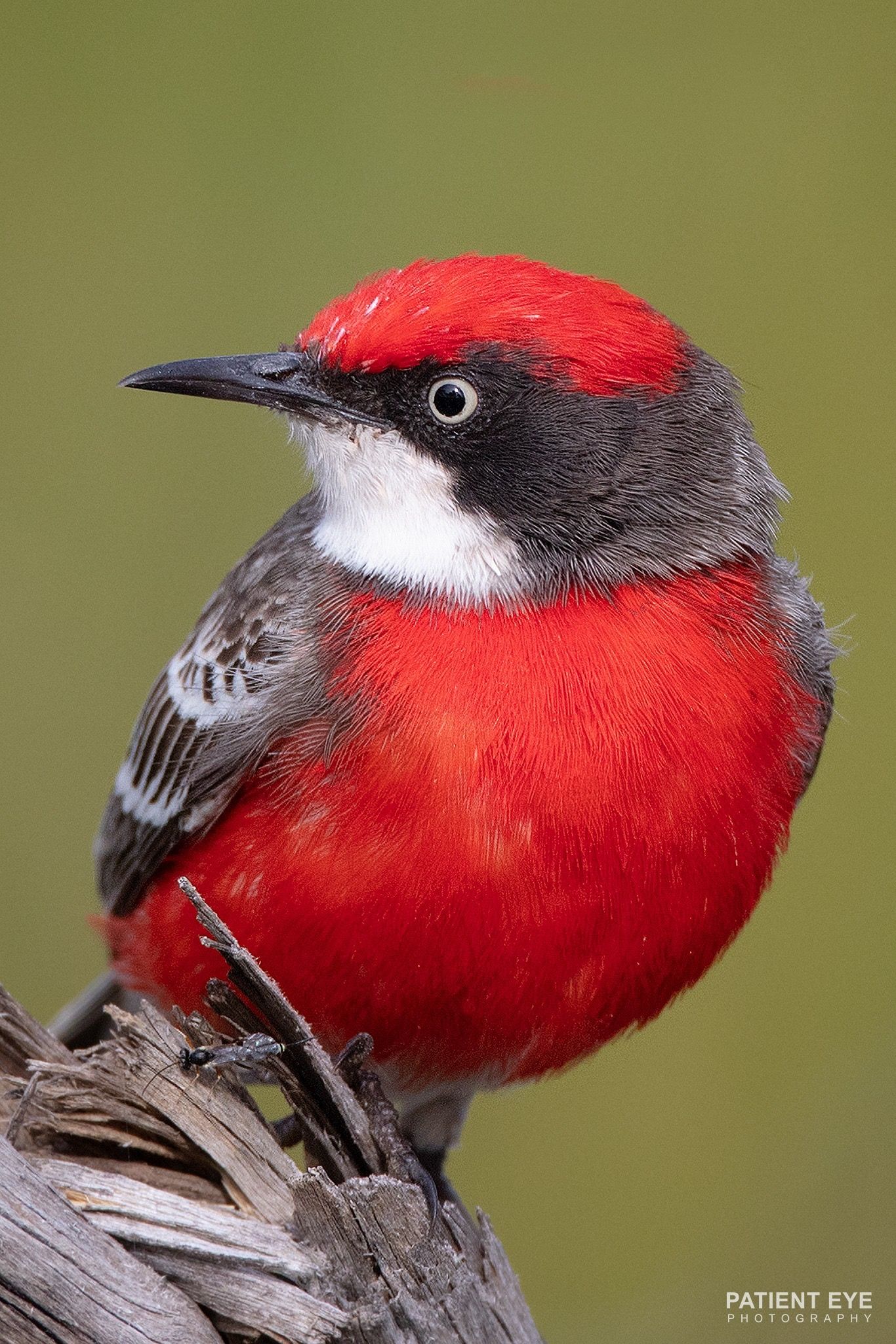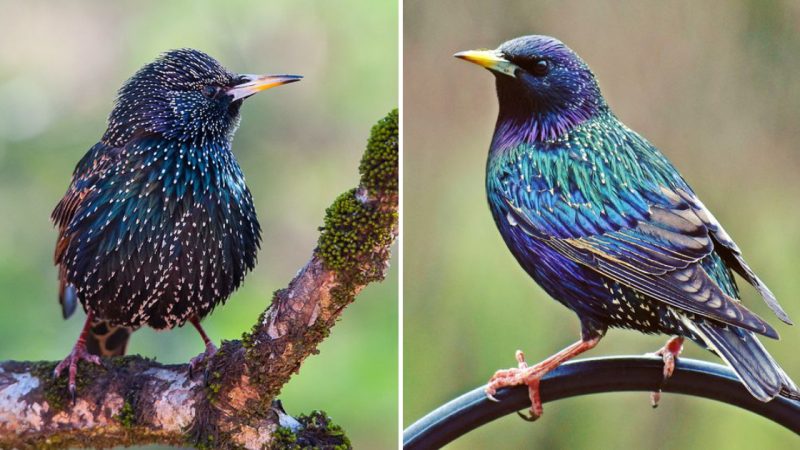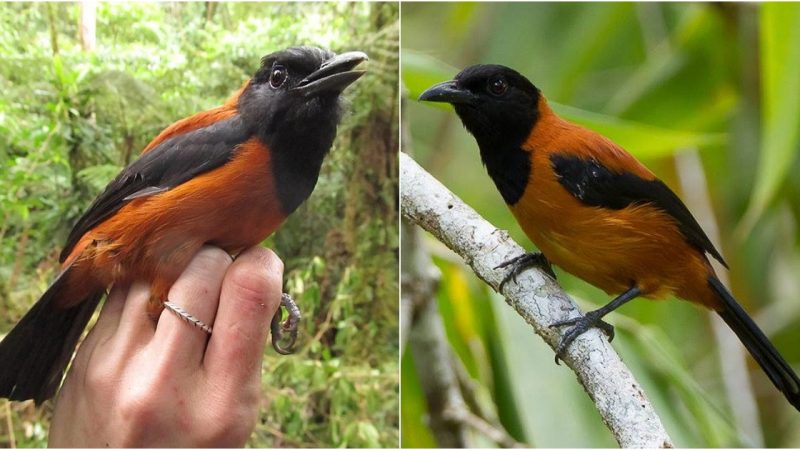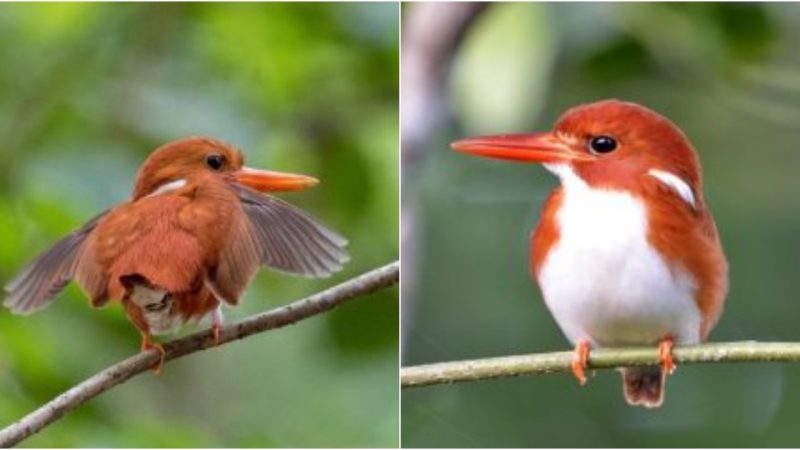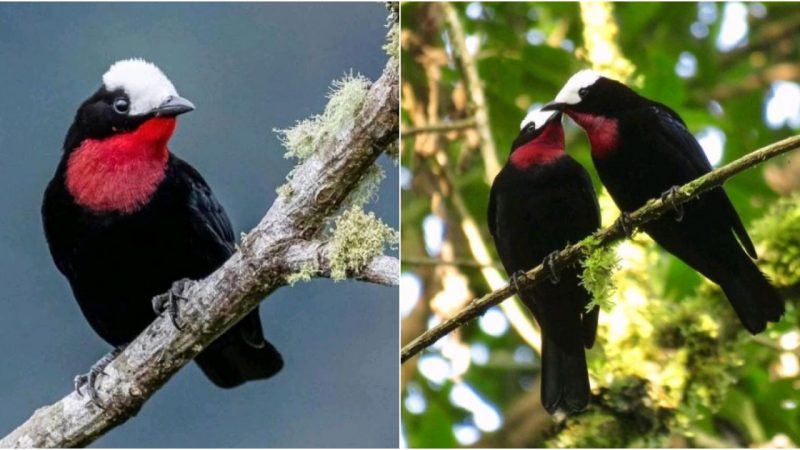Beauty in Flight: The Enchanting Crimson Chat – A Nomadic Songbird of Australia
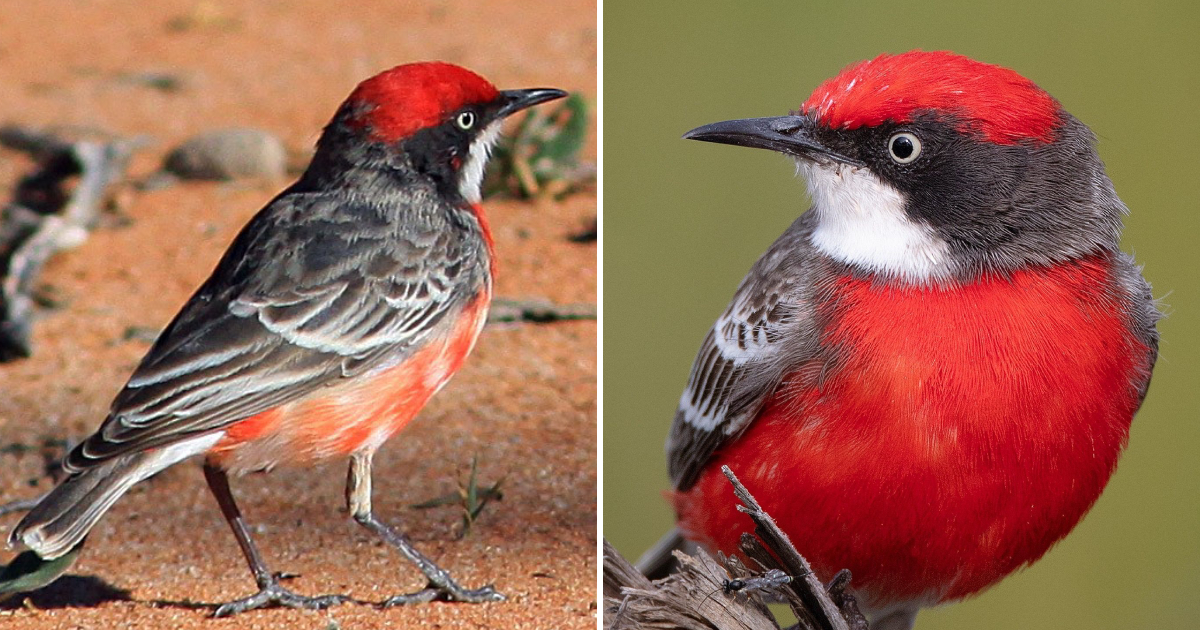
The crimson chat (Epthianura tricolor), also known as the tricolored chat, saltbush canary, and crimson-breasted nun, is a stunning songbird species native to Australia. The male of this species showcases a crimson crown and belly, a gray back, a black mask, a white throat, a light-colored eye, and blackish wings with slender, pale wing bars during the breeding season.
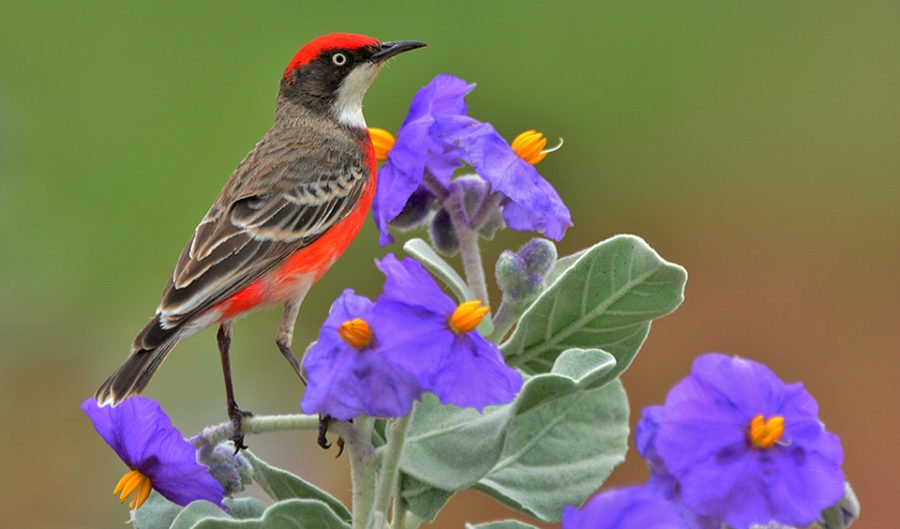
These birds typically measure 10-13 cm (3.9-5.1 in) in length and weigh around 10-11 g (0.35-0.39 oz). Crimson chats possess thin, elongated legs, a downward-curving bill, and a brush-like tipped tongue. Adult males display brown feathers with red crowns and underparts, a black mask around their eyes, and white throats. Females and young birds exhibit similar coloration but with paler markings. Males generally have more vibrant colors than females, especially during the breeding season when they need to attract mates.
The crimson chat is often mistaken for the male red-capped robin, but there are three key distinctions between the two species. The male crimson chat possesses a crimson crown and underparts, a white throat, and a yellow eye. In contrast, the red-capped robin has a black body with a crimson chest and cap, white wing markings, and a dark eye.
Moreover, the crimson chat’s bill is longer and slimmer compared to the robin’s. When a crimson chat is sighted, it is common to find nearby saltbush, Spinifex, or mulga plants, as these are commonly associated with the species.
Crimson chats can be found throughout central Australia, spanning from the west coast to the Great Dividing Range and from the tropics to the south coast. They inhabit diverse habitats, including deserts, semi-arid regions, woodlands, grasslands, and coastal shrublands. These birds typically reside in areas on the outskirts of wet regions where the climate is drier. They live in various types of shrubland, such as saltbush, bluebush, acacia, and samphire.
When rainfall is insufficient, crimson chats move to wetter areas to find optimal flowers and nectar. While they do not follow regular seasonal migrations, flocks of crimson chats may wander over a wide area within their range to track rain.
Crimson chats primarily feed on insects and spiders on the ground or in shrubs. They utilize their brush-like tongue to extract nectar or consume seeds from flowers close to the ground. These birds are more inclined to walk than hop and are commonly observed on or near the ground.
Breeding takes place from August to October in the southern regions and can occur at almost any time in the drier northern regions following rain. During the breeding season and throughout the year, crimson chats form small flocks and pairs. Male and female chats collaborate to defend clusters of nests. Nest construction is a joint effort, with nests positioned close to the ground in low shrubs or grass. They are constructed using grass, rootlets, hair, feathers, and twigs. Females lay 2-4 pink and white eggs with brown-red spots, measuring 17 mm x 13 mm (0.67 in x 0.51 in), and both parents take turns incubating the eggs for 12-13 days. Once the young birds hatch, both parents feed them for two weeks until they are capable of flying and finding food on their own. If a predator approaches the nest, either parent will feign injury to divert the predator’s attention away. Predators may include cats, snakes, foxes, and larger birds like ravens.
The conservation status of this bird is considered secure by relevant Federal and NSW organizations, with the primary threat being predators.

